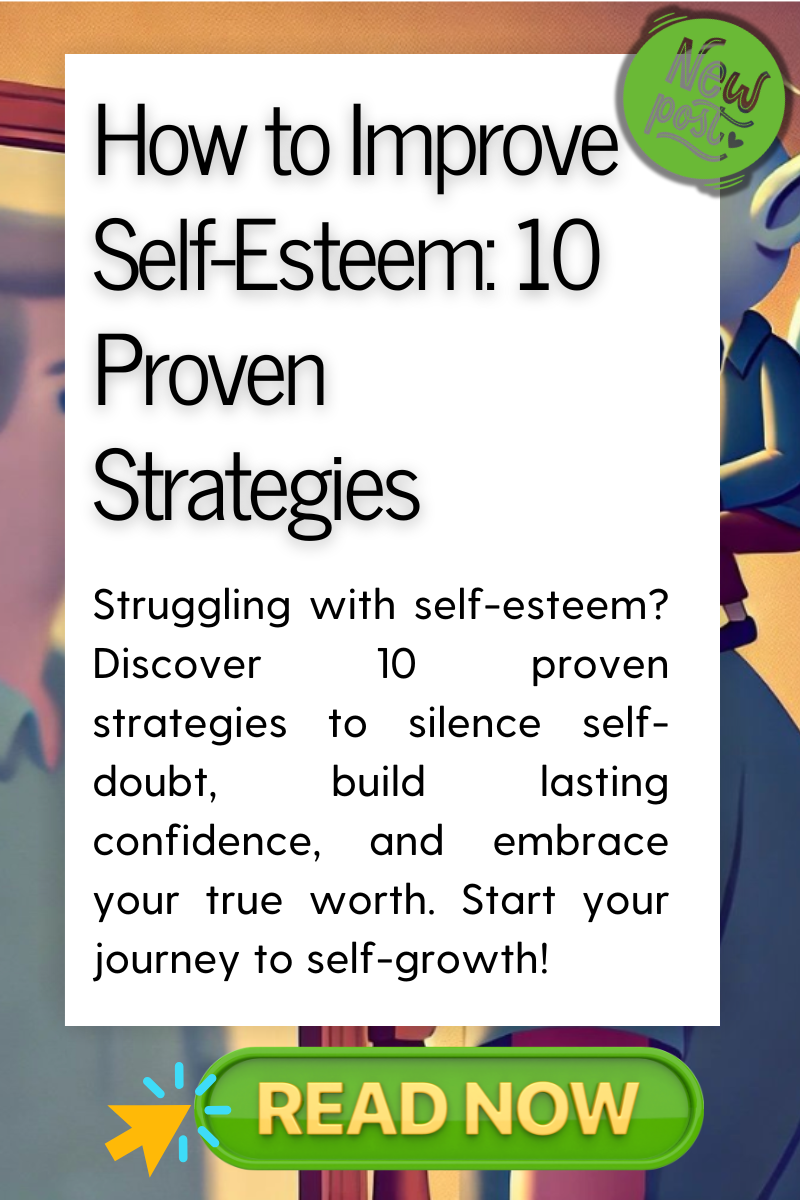Boost Emotional Intelligence: 20 Coaching Exercises
Some people walk into a room and change it without saying a word. They pick up on the energy — the subtle shifts in emotional states — and adjust. They know when to speak, when to pause, and when silence says more. That’s emotional intelligence. And like any muscle, it can be trained.
Most of us were taught logic and strategy, not how to sense the quiet signals under the surface — tone, tension, the way someone’s eyes move when they feel unseen. Yet those are the moments that shape trust, teamwork, and every meaningful relationship in everyday life.
Read the Room, Then Respond
Emotional intelligence training teaches awareness before reaction. It’s not about suppressing emotion; it’s about emotional awareness — noticing what you feel, and why, before you act. In coaching, we take that awareness further. We translate emotion into insight, and insight into better decisions. Over time, it becomes more than a skill — a language of empathy, timing, and balance.
The emotional intelligence coaching exercises ahead are simple, powerful tools to reconnect you with yourself and the people around you. Each one invites presence — that rare ability to stay in the present moment when others rush past it. Think of this as personal training for your inner world: a guide for personal development that sharpens perception, deepens emotional connection, and helps you lead with clarity in work, relationships, and life.
What Emotional Intelligence Really Means
When psychologist Daniel Goleman introduced the modern idea of emotional intelligence, he wasn’t naming a single trait. He was mapping a system — a set of skills that, practiced together, quietly reshape how we move through the world. He outlined four components of emotional intelligence: self-awareness, self-management, social awareness, and relationship management. Each builds on the other, like layers of tone in a song.
Self-awareness is the first note — recognizing our emotional states as they rise and fall. It’s noticing the rush before anger, the unease before a yes we don’t mean. That awareness creates space to choose our emotional responses instead of being driven by them. Self-management turns that space into power. It’s the breath before replying to a text that stings, the reset before a meeting that matters. We stop being passengers of emotion and start steering.
Turn Pause Into Power
Social awareness expands the view. It’s sensitivity to body language, tone, and silence — the feelings others don’t say aloud. People with high EQ listen with more than their ears; they read context like weather. And relationship management is where it all meets the real world — the way we handle conflict, give feedback, lead teams, and protect trust when stress hits.
Your emotional quotient (EQ) isn’t a number to chase; it’s a measure of presence. As it grows, your mind settles. You gain better understanding of people, sharper social skills, and a steadier hand in hard moments. Emotional intelligence isn’t something you have or don’t. It’s something you practice — a skill set that rewards patience, curiosity, and small daily repetitions.
Why Emotional Intelligence Coaching Works
Emotional intelligence isn’t theory — it’s behavior. And behavior changes fastest with feedback. That’s why emotional intelligence training through coaching is so effective. It gives you mirrors where habits hide.
A good coach doesn’t tell you what to feel. They help you notice — where tension starts, what stories repeat, and how emotion shows up in your tone, your pauses, your posture. Once you can see it, you can shape it.
For leaders and team members, this is transformative. Imagine a workplace where people read the room as well as the data… where empathy lives alongside accountability. That’s what happens when social awareness and emotional skill meet structure.
Coaching offers practical tools — guided reflections, role-play conversations, and small weekly habits that build self-control and empathy. These sessions create a kind of emotional gym: repetition, resistance, recovery. Over time, clients develop emotional resilience — the strength to stay steady in stressful situations without shutting down or lashing out.
The result is a positive impact that ripples outward. Relationships deepen. Team dynamics improve. Meetings end with understanding instead of misunderstanding. And people start to feel seen — not managed, but met.
At its core, emotional intelligence coaching is a powerful tool for personal development. It trains awareness into action and turns awareness into better relationships. You don’t have to become someone else to benefit. You just have to become more of yourself — but with clearer eyes and steadier hands.
High emotional intelligence isn’t about perfection. It’s about recovery — returning to presence, again and again, until connection becomes natural.
Emotional Intelligence Exercises
Part 1 – Self-Awareness & Self-Management
Before you can read anyone else, you have to learn to read yourself. These first five emotional intelligence coaching exercises focus on self-awareness and self-management — the first step toward genuine emotional balance. Each one builds fluency in emotional awareness, helping you name what you feel, calm your nervous system, and guide your emotional responses before they take the wheel.
1) 🏷️ The Emotion Labeling Drill
Set a timer for two minutes. Write every emotion you can identify in this moment. Don’t edit. Just notice. Then choose one word that feels closest to true. This simple practice strengthens the link between language and limbic system — a small, practical tool for recognizing own emotions before they spill over.
2) 📓 Trigger Journal
Throughout the day, jot quick notes whenever you feel your body tighten: what happened, what you felt, how you reacted. Over a week, patterns appear. These trigger journals turn vague moods into visible data. With regular self-reflection, you begin to see which emotional states drain you and which invite positive emotions back in.
3) 🌬️ The Pause Break
Before responding in a difficult situation, take a single breath — in for four, hold for four, out for six. This tiny pause tells your nervous system you’re safe. The more you practice, the more control you gain over instinctive emotional responses. People with high EQ don’t suppress feelings; they stretch the space between stimulus and reaction.
4) 🗺️ Values Alignment Map
List your five core values on one side of a page. On the other, list how you actually spend your time. Draw connecting lines where they match — and question the gaps where they don’t. Misalignment is often the quiet source of stress. This self-management exercise builds emotional resilience by reconnecting daily choices to what matters most.
5) 🧘 The Recovery Ritual
When frustration hits, choose one sensory cue that grounds you — cold water on wrists, a short walk, stretching your hands open. Repeat until your breathing steadies. Over time, this becomes muscle memory: emotion → awareness → reset. Simple, quick, embodied.
Read First, Then Redirect
These five simple exercises lay the foundation for deeper emotional intelligence skills. They won’t erase anger or anxiety; they’ll make them readable. And once you can read them, you can redirect them — into patience, focus, or empathy.
Part 2 – Social Awareness & Empathy
Once you’ve built awareness of your own emotions, the next step is seeing others more clearly. Social awareness is the art of reading the room without judgment — picking up the emotional cues most people miss. These exercises build the bridge between empathy and communication, helping you respond with accuracy instead of assumption.
6) 🪞 The Empathy Mirror
Partner up. One person shares a small frustration — nothing too heavy. The other’s job isn’t to solve it but to reflect the feeling: “You sound disappointed,” or “That must have felt discouraging.”
This is the simplest form of empathy skills training: naming what you notice. When people feel mirrored, trust grows.
7) 🔍 The Body Language Decoder
In a small group, have each person act out a silent emotional scene: joy, anxiety, pride, or hesitation. Others guess what emotion they see using only body language and facial expressions.
It’s playful, but powerful — you start to spot how emotion leaks through posture and micro-movement.
8) 🎧 The Listening Loop
Choose a friend, partner, or coworker. Ask one thoughtful, open-ended question, then listen without interrupting. When they finish, summarize what you heard and ask, “Did I get that right?”
It’s not about being perfect — it’s about building mutual understanding. This one shift in social interactions can transform better relationships and team dynamics alike.
9) 🔄 The Perspective Flip
Pick a recent conflict. Write five sentences from the other person’s point of view. Imagine their stress, their unmet needs, the story they tell themselves.
This expands social skills beyond courtesy — it’s emotional translation. The more often you do it, the faster compassion replaces defensiveness.
10) 🤫 The Silent Meeting Scan
Next time you’re in a meeting or family conversation, stay quiet for one minute. Watch who leans forward, who folds arms, who avoids eye contact. Then contribute by inviting one quiet voice in: “Sarah, I’d love to hear your take.”
You’ll notice how that one gesture changes the tone of the entire space.
Listening Is Leadership
These group activities might sound simple, but they cultivate deep emotional connection. They create a safe space where listening becomes leadership. And in any productive work environment, that’s the unspoken advantage — empathy isn’t weakness. It’s precision. People with high EQ don’t guess what others feel; they notice, confirm, and respond.
Master these five and your presence will start to shift rooms — not through force, but through attention.
Part 3 – Relationship Management
If self-awareness helps you steady your inner world and social awareness tunes you into others, relationship management is where the two meet. It’s emotional intelligence in motion — how you handle disagreement, express truth, and rebuild trust without burning bridges. These five emotional intelligence activities are designed to strengthen collaboration, empathy, and courage in connection.
11) 💬 The Feedback Frame
When something bothers you, skip blame. Start with “I noticed…” and end with “Can we find a way…?”
This turns feedback into a bridge, not a wall. It’s the cornerstone of effective communication — clear, kind, and specific.
12) 🤝 Team Check-In Circle
Gather your team members for a 10-minute round: each person shares one win, one challenge, and one small ask.
No fixing, no debate — just listening.
It’s a safe space that builds positive emotions and trust while aligning everyone to a common goal. Over time, you’ll see team dynamics shift from guarded to genuine.
13) 🖼️ Conflict Reframe
Write down a recent disagreement. Underneath each criticism, list the unmet need behind it: “You’re never around” becomes “I miss you.”
This simple act transforms tension into better decisions about what really matters.
It’s practical conflict resolution — less noise, more clarity.
14) 🛠️ The Repair Conversation
Reach out to one person where things feel unfinished. State your part, ask how they experienced it, and listen without defending.
This is emotional heavy lifting, and it strengthens emotional resilience faster than any worksheet.
Leaders with high EQ use this regularly; it keeps stronger relationships intact when pressure rises.
15) 🙏 The Gratitude Ripple
End the week by sending a short note — a text, email, handwritten line — to thank someone for something specific they did.
No fluff, no emoji storm. Just truth.
Gratitude amplifies social skills by reminding both giver and receiver that respect is renewable energy.
Presence, Not Perfection
In a group setting, these exercises cultivate empathy, honesty, and momentum. They’re practical tools that help the entire team stay human in high-stakes environments. When practiced consistently, they produce measurable shifts: smoother collaboration, fewer misunderstandings, richer emotional connection. The paradox of relationship management is that it doesn’t demand perfection — it rewards humility.
When you approach people as works in progress — including yourself — you start to see that better relationships aren’t built through control, but through presence.
Part 4 – Integration & Growth
Emotional intelligence only works when it leaves the page and enters everyday life. That’s the difference between knowing what empathy is and living it. These last five coaching exercises are about integration — the link between insight and action, between learning and continuous improvement.
16) 🌟 The Best-Self Visualization
Close your eyes for sixty seconds. Picture yourself in a challenging moment — a disagreement, a deadline, a difficult conversation.
Now imagine your most emotionally intelligent self handling it: voice calm, body relaxed, words precise.
This exercise rewires your emotional awareness through mental rehearsal, training your brain for poise before real stress arrives.
17) 🪜 The Gratitude Ladder
Each night, list three specific things that brought you positive emotions today, and then ask why they mattered.
This simple reflection builds self-management by teaching your mind to linger on what restores rather than what drains.
Gratitude is a nervous system reset — a direct route to perspective.
18) 🔋 The Energy Audit
Draw two columns: “Fuels” and “Drains.”
Under each, list situations, habits, and people that raise or lower your energy.
You’ll start to see your emotional ecosystem in action.
Shifting time toward what fuels you is a subtle form of personal growth — less heroic than habit hacks, but more sustainable.
19) ⏸️ The Mindful Transition
Before moving from one task to the next, take a single conscious breath. Drop your shoulders. Notice how you feel.
This micro-pause is one of the most underrated practical tools in emotional intelligence training.
It prevents carryover — that moment when the frustration from one conversation bleeds into the next.
Practiced often, it’s emotional hygiene.
20) 📆 The Friday Reflection
At week’s end, write down three moments where you embodied high emotional intelligence — maybe you paused instead of snapping, or asked instead of assumed.
Then choose one place to improve next week.
Attention > Perfection
Over time, these small reflections compound into long-term change. You’ll notice a calmer tone, steadier patience, and better understanding of others in both your personal life and professional world.
These five close the loop — turning insight into rhythm, not resolution. They remind us that emotional resilience grows from repetition, not revelation. You don’t need perfection to create better relationships; you just need attention.
The goal of personal development isn’t to fix yourself — it’s to know yourself deeply enough to act with choice instead of reflex. That’s where the real positive impact begins.
The Science and Art of Emotional Growth
Emotional Intelligence in Motion
Practicing emotional intelligence isn’t about memorizing frameworks. It’s about feeling smarter — knowing how to notice, name, and navigate emotion in motion. The way people manage feelings at work or home often decides whether conversations connect or collapse. Great leaders know this. They read the emotions of others, adapt tone and timing, and still express conviction without shutting anyone down. It’s not luck — it’s EQ training in action.
The Research Behind Growth
Scientific research is clear: emotional intelligence grows through consistent skill development — short, repeatable moments of awareness followed by reflection. Think of it as reps for the mind: one mindful breath, one empathetic question, one re-framed thought. These micro-choices may feel small, but over time they create significant improvements in clarity, patience, and trust. The most effective ways to strengthen EI start with active listening and open-ended questions. When you stop planning your reply and simply listen, you hear not just words but intent — the hopes, fears, and stories underneath. That’s where emotional skills expand.
Meeting Your Own Emotions First
You can’t build empathy without meeting your own negative emotions. Anger, envy, disappointment — each one carries information. Learning to express emotions clearly and calmly is an important part of self-management. Suppressing them creates distance; understanding them creates direction. In coaching, we explore the emotional experiences that shaped current patterns — the moments where communication froze or flared. These personal experiences become data for growth. From there, we design an action plan to practice new responses in real time.
Turning Reflection Into Response
Sometimes that means short breaks during conflict — a two-minute walk, a few deep breaths — so logic and empathy can re-enter the room. Other times it’s about rewriting the narrative behind stress, turning a difficult situation into a learning curve. The practical application of EI isn’t abstract; it’s the habit of checking in before reacting, asking questions instead of assuming, and staying curious when emotions rise. Each repetition rewires your ability to respond in different ways — calmer, clearer, more connected.
The Ripple Effect of High EQ
In small groups, the results compound. When even a few people model high-EQ behaviors — listening, validating, pausing — everyone else adjusts. Fewer voices dominate, and fewer people feel ignored. Teams notice a great opportunity for alignment: more ideas, less ego. Over time, you’ll see strong relationships where tension once lived. Communication skills replace defensiveness. Interpersonal relationships become more fluid, honest, and grounded. It’s not magic; it’s momentum.
If you’ve ever wondered about the best thing in EI training, it’s this: it makes you a more effective part of the group while preserving your individuality. You don’t lose yourself to harmony — you bring your own abilities into harmony. That’s the paradox of high EI: the more you learn to manage yourself, the freer everyone else becomes. The work is subtle but transformative — one conversation, one pause, one breath at a time.
Key Insights: Emotional Intelligence
Emotional intelligence isn’t something you master once — it’s something you keep meeting in new forms. Every challenge becomes another rep in your emotional gym.
The real strength is in noticing — the flicker of irritation before it turns to anger, the quiet pull of empathy before judgment steps in. That’s emotional awareness and social awareness at work. Over time, these small acts of noticing become instinct. You catch yourself mid-reaction and choose again. You communicate instead of defend. You breathe instead of break.
That’s emotional resilience in everyday life — less perfection, more recovery. And that’s how personal development deepens: through steady practice, not sudden transformation. Every choice to pause, reflect, or listen compounds into better relationships and a wider positive impact on the people around you. That’s the quiet rhythm of continuous improvement in the present moment.
Journal Prompt:
When was the last time I paused before reacting — and what changed because I did?
Train Your EQ, Change Your Life
Want help building your own emotional playbook? Emotional intelligence training doesn’t have to stay theoretical. Through coaching, we turn these practices into practical tools for real moments — conversations with family, feedback at work, the situations that test your patience or confidence. Together, we’ll strengthen your emotional resilience, sharpen awareness, and grow the skills that lead to better relationships and deeper emotional connection. Small shifts in perception create a lasting positive impact — not just for you, but for everyone around you.
Join the Conversation
This post is one side of the story… the other side is yours. What came up for you?
FAQ: Questions People Ask About Emotional Intelligence
1) What exactly are emotional intelligence coaching exercises?
They’re guided practices designed to strengthen your ability to recognize, regulate, and express emotion. From self-awareness drills to empathy challenges, each exercise improves real-world emotional intelligence skills you can use every day.
2) How does emotional intelligence training work?
You practice — with structure and reflection. Through short sessions, personalized strategies, and feedback, you learn how to manage emotional awareness, build social awareness, and make better decisions under pressure.
3) Can emotional intelligence really be developed, or is it innate?
Completely trainable. Like fitness, consistent reps lead to growth. You don’t need to be naturally calm — you learn to recover faster. That’s emotional resilience.
4) What are the long-term benefits of improving EI?
People with high EQ report better relationships, clearer communication, and lower stress. In the long term, these habits translate to steadier confidence and deeper emotional connection in both work and personal life.
5) How can EI help in the workplace?
Emotions drive collaboration and creativity. Teams with high emotional literacy communicate more honestly, handle tension better, and build trust faster — key ingredients for a productive work environment.
6) What role do HR managers or leaders play in developing EI?
Leaders model tone. When HR managers or executives introduce emotional intelligence workshops, they create a safe space for team members to explore emotion without fear of judgment — a vital step in culture change.
7) How does EI relate to conflict resolution?
It turns reaction into reflection. You learn to slow down, understand the unmet need behind anger, and find language that keeps connection intact.
8) Is this approach different from therapy?
Yes. Coaching is forward-focused. It’s less about the past and more about practical skill-building for communication, empathy, and self-management.
9) How fast do people usually see results?
Within weeks. Even a few mindful pauses or breathing resets can change tone, presence, and perception almost immediately.
10) Who benefits most from emotional intelligence training?
Anyone committed to personal development — from leaders seeking calm clarity to partners wanting positive emotions and understanding in daily life.
Still have questions?
Let’s turn them into a plan. Get clear, practical answers tailored to your situation—and leave with two EQ exercises to start this week. 👉 Book a free coaching consultation.
Essential Reads for Emotional Intelligence Skills
If you want to go beyond abstract concepts, these books expand the key skills behind emotional intelligence training and translate them into everyday practice. Each offers a different doorway into emotional awareness, personal development, and lasting positive change.
1) Emotional Intelligence 2.0 — Travis Bradberry & Jean Greaves
A practical ei skills guide with quick assessments and short strategies for turning insight into action — great for professionals and teams aiming for continuous improvement.
2) Primal Leadership — Daniel Goleman, Richard Boyatzis, & Annie McKee
A classic on how emotions drive leadership. Perfect for conflict management, and cultivating adaptable employees and emotionally intelligent cultures when difficult situations plague any work environment.
3) Permission to Feel — Marc Brackett
Blends science and compassion to help readers name emotions with clarity — a skill that builds emotional resilience and healthier relationships over time.
Theory Ends. Practice Begins.
Each one reinforces the truth that emotional growth isn’t theory — it’s lived practice. And when you practice consistently, you create a ripple of positive impact that touches every conversation, decision, and connection you make.
Ready to turn insight into habits?
Let’s build your personal EQ plan with practical tools you’ll use this week—so you communicate clearer, handle difficult moments steadier, and create better relationships on purpose. 👉 Book a free coaching consultation.
Emotional Intelligence Coaching with Josh Dolin
Emotional intelligence isn’t a skill you read about — it’s one you practice. Through one-on-one emotional intelligence coaching, we turn awareness into movement. You’ll learn how to manage emotion under stress, lead with empathy, and strengthen social awareness in real time.
Whether you’re focused on personal development, leadership growth, or creating better relationships at home and work, coaching offers a space to learn, reflect, and recalibrate. You’ll leave each session with emotional resilience you can feel — and an emotional connection that carries into every conversation.
Because when you grow in awareness, everyone around you benefits. That’s the quiet power of this work… and its lasting positive impact.




























